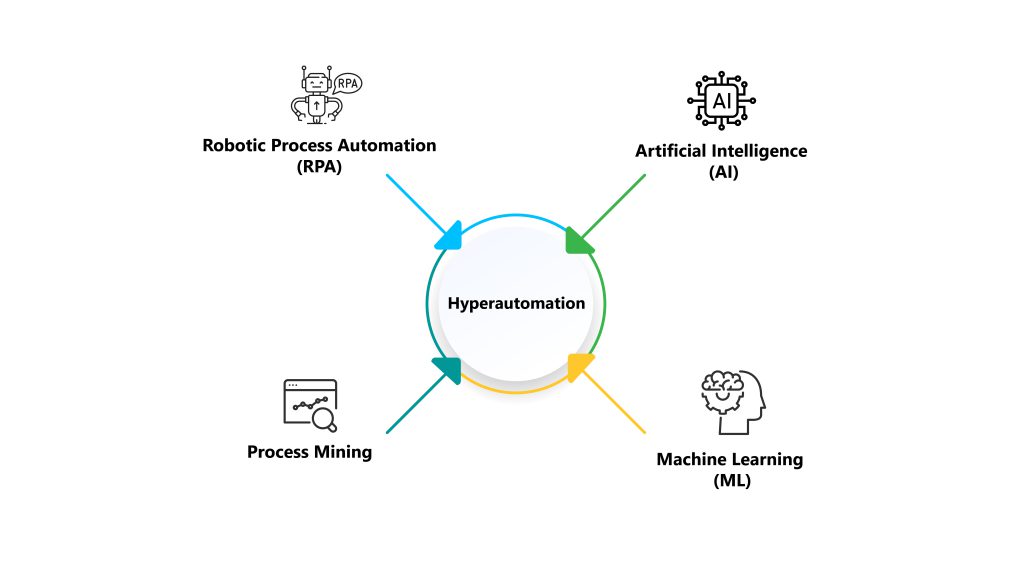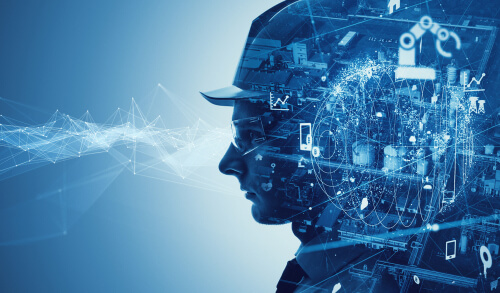Hyperautomation has captured the imagination of many practitioners across varied industries. It is centered on combining technologies like machine learning (ML), process intelligence, data analytics, intelligent document processing (IDP), robotics, IoT, generative AI and low-code platforms to drive the rapid expansion and extension of automation. Hyperautomation can remarkably enhance the accuracy and efficiency of our daily activities.
For example, while reviewing a payslip, AI can analyze the document quickly and highlight any minimal discrepancies by providing a preliminary breakdown of earnings and deductions. Similarly, for processing insurance claims, AI can predict the actual claim amount based on the details provided as input, allowing users to verify and adjust their expectations even before receiving the official decision from the respective service provider or insurance company. Also, when applying for a loan in the bank or any external services, AI can predict the creditable potential loan amount based on inputs such as the applicant’s income and credit score. This estimation, along with prior validation, helps users confirm the accuracy of their information and set realistic expectations for their output. By doing so, generative AI minimizes the chances of repeating the same process, thereby reducing the anticipation and disappointment often experienced during these processes.

Hyperautomation has the ability to create significant change in the industry by offering new or improved products, services, and business models that help solve problems in a more efficient or effective way. With Hyperautomation, a significant part of the workforce can focus on strategic activities that are essential to help an enterprise drive business advantage. All businesses are now increasingly turning to AI-based analytics and augmented decision-making, including intelligent automation. The demand for hyperautomation has surged due to the increasing pressure on organizations to achieve operational excellence and ensure resilience in a rapidly evolving business environment.
Advancements in hyperautomation are revolutionizing the way organizations operate by combining cutting-edge technologies like artificial intelligence (AI), machine learning (ML), robotic process automation (RPA), and advanced analytics.
This drives operational excellence by reducing manual tasks, increasing the speed of processes, and ensuring consistent, high-quality output as it automates complex workflows and processes across an organization.

Let us see in detail what factors contribute to the increasing adoption and expansion of hyper automation solutions:
-
Operational Excellence
It helps improve the efficiency of business processes by minimizing errors and optimizing resources, hence contributing to continuous improvement. By streamlining operations, it improves the overall quality of products and services.
- Impact on Businesses: With hyperautomation, one can not only achieve better alignment of resources by eliminating bottlenecks but also improve decision-making through data-driven insights and enhance customer experiences. Automated systems can handle routine tasks efficiently by freeing up human workers to focus on more strategic and value-rich activities.
-
Support for Resilience
Hyperautomation enhances resilience by creating more adaptable and agile business processes. Automated systems can quickly adjust to new conditions, making it easier to scale operations, maintaining continuity, and responding impulsively to sudden changes or crises that arise. For example, a supply chain can be automatically adjusted to reflect new supplier conditions based on demand, or customer service processes can be redirected to address increased demand for new service models.
- Impact on Businesses: In an unpredictable business environment, resilience is key to survival for any business model. Hyperautomation helps us maintain operations despite any external disruptions by reducing the risks associated with human error, operational bottlenecks, or outdated legacy systems which are resistant to change.
-
Increased Demand and Growth of Hyperautomation Solutions
Hyperautomation solutions are now more amenable to customizations to fit the unique needs of different industries and business functions worldwide. Customization and scalability are the deciding factors for such transformations. As more organizations realize the hidden potential of these technologies, they are investing in solutions that can scale and adapt as their business grows, further accelerating market demand at a progressive scale.
- Impact on Businesses: Hyperautomation is developing along with its ecosystem where vendors continuously improve their offerings to invest in new solutions according to changing needs. The integration of AI-driven insights and advanced analytics into these automation processes enables more intelligent solutions which helps improve decision-making, optimization and predictive capabilities, all of which are crucial for continuous improvement and innovation in this rapidly evolving modern world.
The major key developments that drive hyperautomation forward are:
- End-to-end automation
- Integration of AI and ML
- Focus on sustainability
- Job enhancement
- Scalability and flexibility
- No-code/Low-code platforms
- Process mining and discovery
- Intelligent Document Processing (IDP)
- AI-driven analytics
- Human-in-the-loop automation
- Improved collaboration tools
Modern hyperautomation platforms enable seamless automation across entire workflows, connecting disparate systems and processes for a unified, efficient operation. They not only leverage AI and ML to enable intelligent decision-making and adaptive processes but also enhance predictive capabilities, ensuring that processes evolve based on the provided real-time data. Also, tools for process mining and task discovery have become more advanced, enabling organizations to identify impediments well ahead and inculcate automation opportunities with precision.
By using hyperatomation, businesses stand to benefit from increased efficiencies, improved decision-making capabilities, enhanced adaptability to market changes and the ability to handle complex processes effectively. Our solutions, developed with user-friendly, no-code, and low-code tools, empower non-technical users to design and deploy automated solutions, democratizing hyperautomation by incorporating IDP to extract, analyze, and manage unstructured data from documents, emails, and forms.
With the advent of agentic automation, optical character recognition (OCR) and rudimentary data scraping, hyperautomation can now dramatically accelerate and expand business process automation to drive holistic digital transformation. Moreover, our cloud-based solutions facilitate rapid scaling of automation efforts while preserving the flexibility to adjust to evolving business demands. Our enhanced analytics deliver actionable insights that empower organizations to refine processes, minimize costs, and enhance decision-making at a larger scale. By merging our automation solutions with human inspection, we guarantee that crucial decision points are addressed effectively, significantly diminishing or entirely eradicating manual intervention. Our advanced collaboration capabilities
seamlessly integrate hyperautomation across departments and systems, cultivating a unified workflow ecosystem that incorporates strategies for energy-efficient operations and reduced resource consumption, aligning with sustainability objectives.
In summary, the increasing demand for hyperautomation is driven by the need for organizations to streamline their operations and enhance resilience in the business process. Hence, they are involved in exploring the possibilities of mixing and matching from a wide array of AI technologies and next-gen tools. The software workforce can engage in more meaningful work that requires human knowledge, judgment, and creativity instead of performing repetitive tasks that take quality time away from people. As businesses continue to face tremendous pressure to perform at their best, the capability to automate complex processes and adapt to change becomes a critical competitive advantage in today’s modern world. Hyperautomation provides the tools to achieve both operational excellence and resilience resulting in continued growth in the market. With this, we will see an increasing number of enterprises fostering innovation in the workplace and actively implementing programs to help their workforce enhance their skills with this technology.
At Happiest Minds, we have people who invest in reskilling and upskilling themselves to expand their knowledge and create a positive, forward-looking culture across the enterprise. With the emergence of collaborative models blending human expertise and AI-driven interactions, hyperautomation is primed to nurture deeper, more meaningful engagements, revolutionizing the way industries operate in the near future. As every business prioritizes efficiency, agility and sustainability, hyperautomation will continue to drive digital transformation across industries with real-time insights, data-driven decisions and performance optimization. Organizations that utilize these upgrades in their business will gain a competitive edge as they enhance productivity, reduce operational costs, and deliver the best customer experience.

is a passionate Java and Guidewire developer and a Senior Software Engineer for Product and Digital Engineering Services at Happiest Minds. She has over 5 years of experience in various domains, including insurance, mining, and finance. Yuva showcases her commitment to innovation and excellence in software development by working in both agile and scrum methodologies. She has a proven track record in enhancing security vulnerabilities and upgrading Java frameworks.







